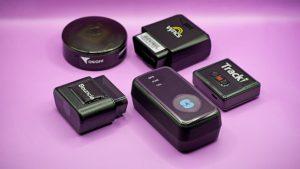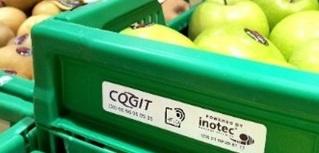What is the main difference between GPS and RFID asset tracking?
GPS (Global Positioning System) technology uses active, real time information from satellites to pinpoint the exact location of a tagged asset at all times in a global context.
GPS trackers are active devices which are not limited to a geographic area but do require a clear sky with line of sight to be able to communicate with satellites.
An RFID (Radiofrequency Identification) tag is a microchip that is put into a passive, battery powered or active RFID transponder. This is tracked via an RFID reader which does not require line of sight and can read multiple tags at one time.
The RFID tags do not provide continuous location tracking, they are inactive until a reader activates them to transmit data back regarding their location.
The range of passive tags is limited to the read range of the RFID reader (or scanner) which can be up to 30m. Active RFID tags tend to have a more proprietary use with a range based on battery limitations.
Industries that use RFID tags

Overview – Small but valuable products in enclosed facilities
- Ecommerce businesses – supporting accurate inventory control and processing to increase productivity
- Hospitals – tracking healthcare assets within a hospital environment
- Automotive manufacturing – comprehensive visibility of components throughout the supply chain
- IT asset management – monitoring of infrastructure hardware including laptops and computers
- Food/beverage logistics – improving product inventory and processing accuracy
Industries that use GPS tracking

Overview – Larger assets that are outside
- Vehicles – fleet based businesses remotely monitor all cars/trucks
- Oil and gas industry – real time visibility of fleet operations including heavy equipment, bulk tanks and vehicles
- Cargo/freight – monitoring valuable shipments or containers 24/7
- Construction sites – helping to reduce theft on building sites
Which uses the most energy – GPS or RFID tracking?
As a GPS tracker is in constant communication with satellites it is therefore energy-hungry. To cope with the amount of energy required, GPS trackers can often be powered by a vehicle’s battery (in the case of a tracker on a moving vehicle).
Passive RFID tags do not use power whilst active RFID systems use low energy, battery powered tags. An RFID reader does use power but is usually connected to an AC power supply.
The advantages of RFID asset tracking
RFID tracking works very effectively for tracking and tracing assets inside a fixed location. It has been specifically designed to support inventory control and processing within production or distribution facilities.
The use of RFID tags on products, totes or crates enables computer systems to accurately record and automatically update data regarding identity, location, quantities, sizes and variants. For example, if an RFID tag is used on a grocery tote, the scanner can identify what is in that tote and whether anything needs to be added before it is sent onwards for delivery.

The cost of RFID technology is considerably cheaper than the equivalent price of GPS tracking as most active GPS trackers require a paid for subscription service.
The benefits of GPS tracking
GPS trackers are constantly sending real-time information on the tracked asset to computers, tablets or smartphones. These trackers can be used to pinpoint the precise location of a wide range of items from cargo containers to cars and from people to pets.
Using GPS tracking on a large, valuable item such as a car, reduces the risk of theft because a notification is received when a GPS tracked asset is moved from its intended location.
Smaller, priceless assets such as children or teenagers can also be traced using GPS tracking, giving a parent peace of mind regarding their whereabouts.
Attaching a GPS tag to a dog’s collar lets the owner know where the dog is at all times and means it can be found if it goes astray.
![]()
Which is better – GPS or RFID asset tracking?
RFID trackers do not provide the global read range of a GPS tracker – they are the ideal answer to track items in a fixed area, for example a distribution centre or warehouse.
As GPS trackers don’t need to be anchored by a fixed reader they are designed for use in outdoor areas where they can track assets or people almost anywhere in the world.
So which is better, RFID or GPS asset tracking? As this blog demonstrates the answer depends on the size and location of the asset to be tracked together with the size of the area to be monitored.
RFID solutions from inotec UK
As a labelling and security tag specialist, inotec UK provides its own unique RFID label solutions to a wide range of industries including logistics, automotive, food and drink and e-commerce.

